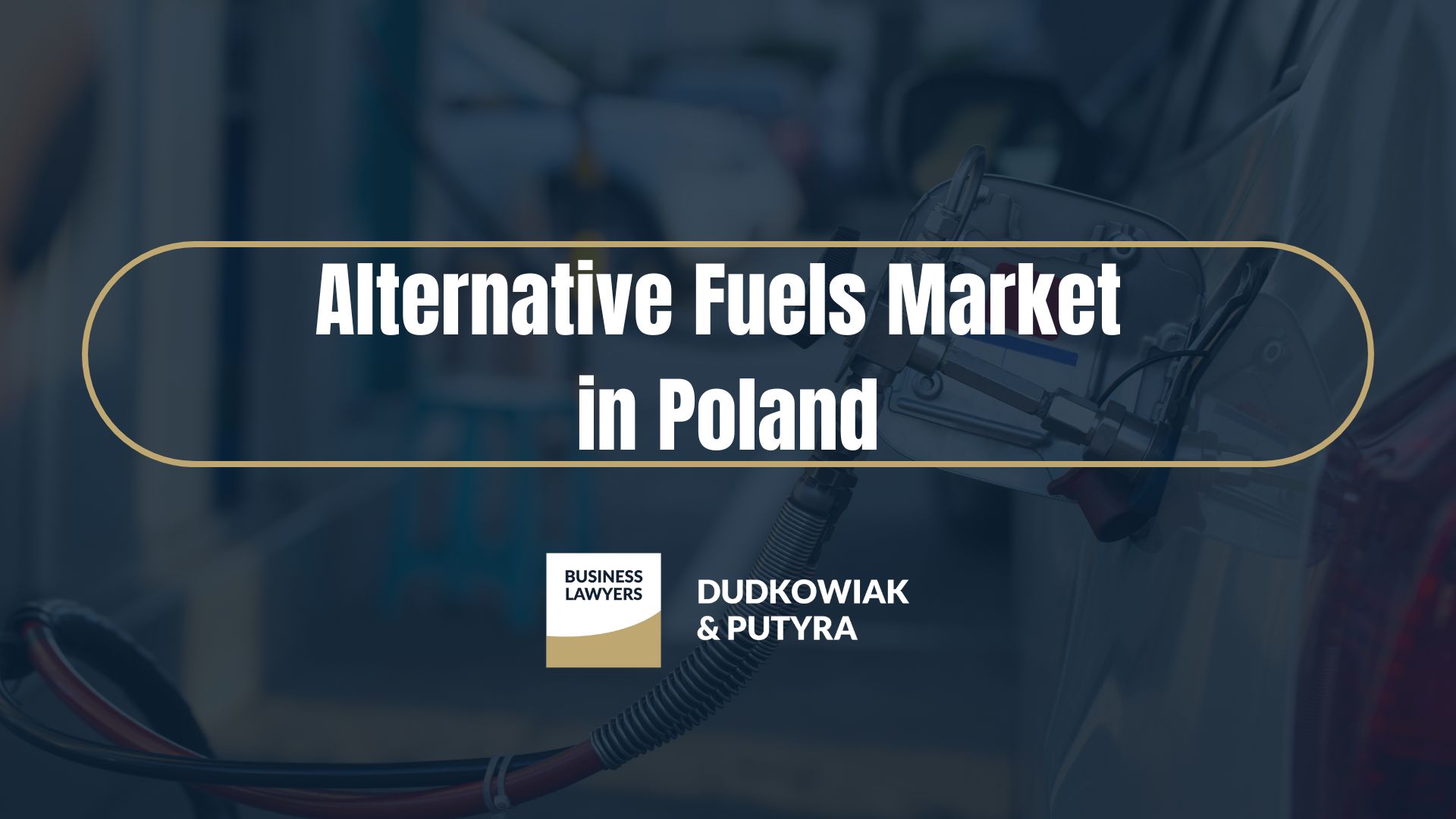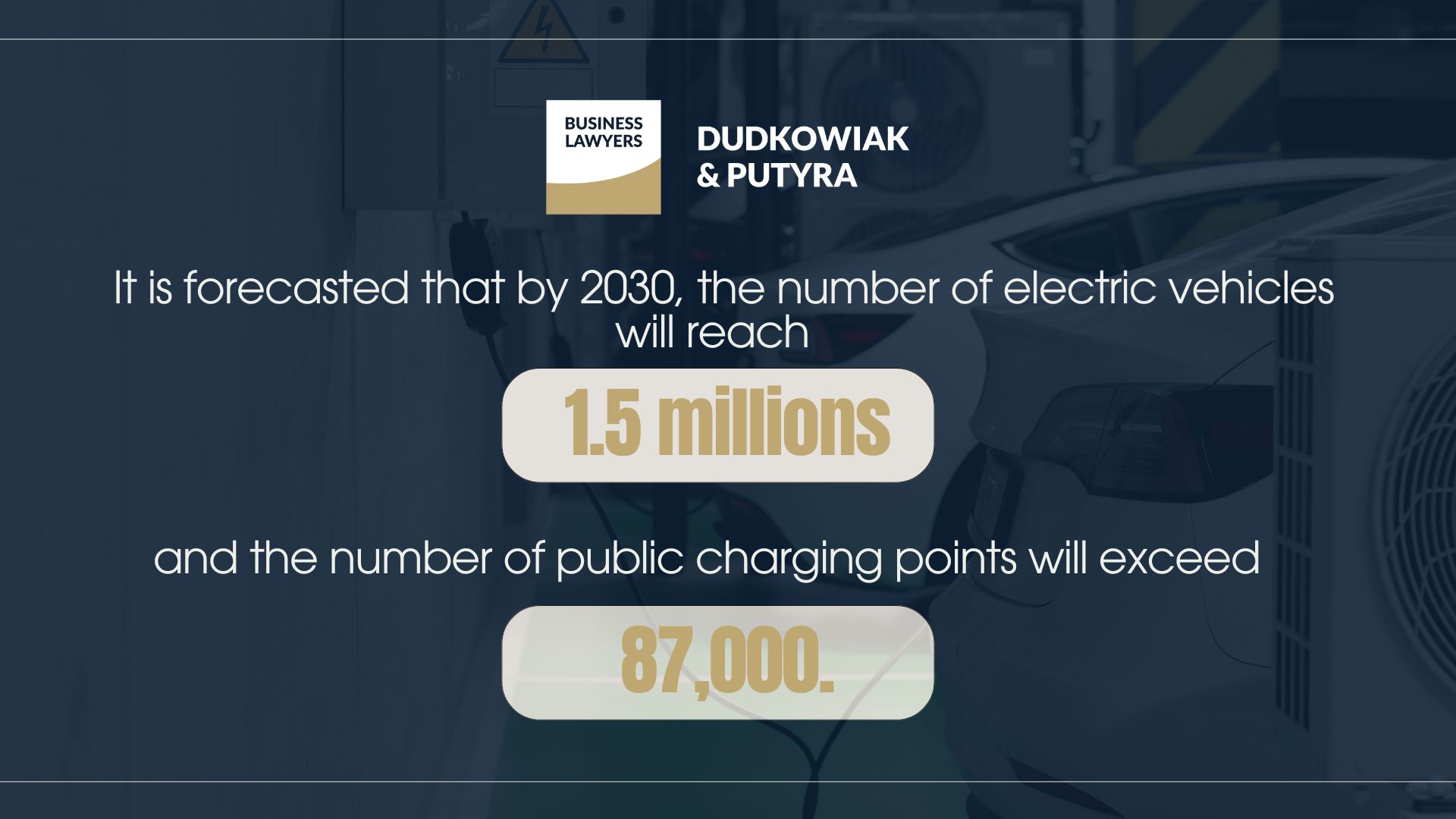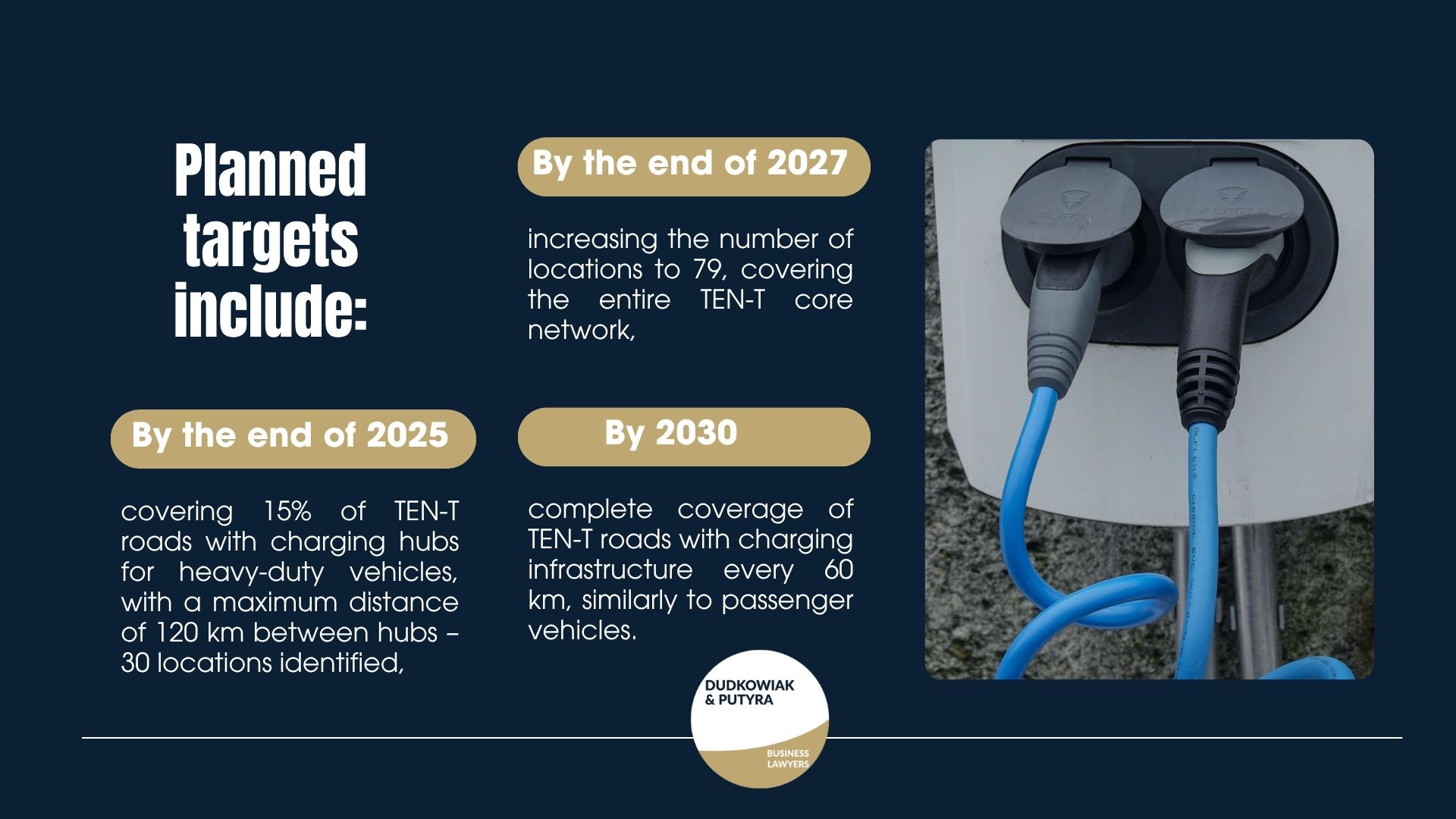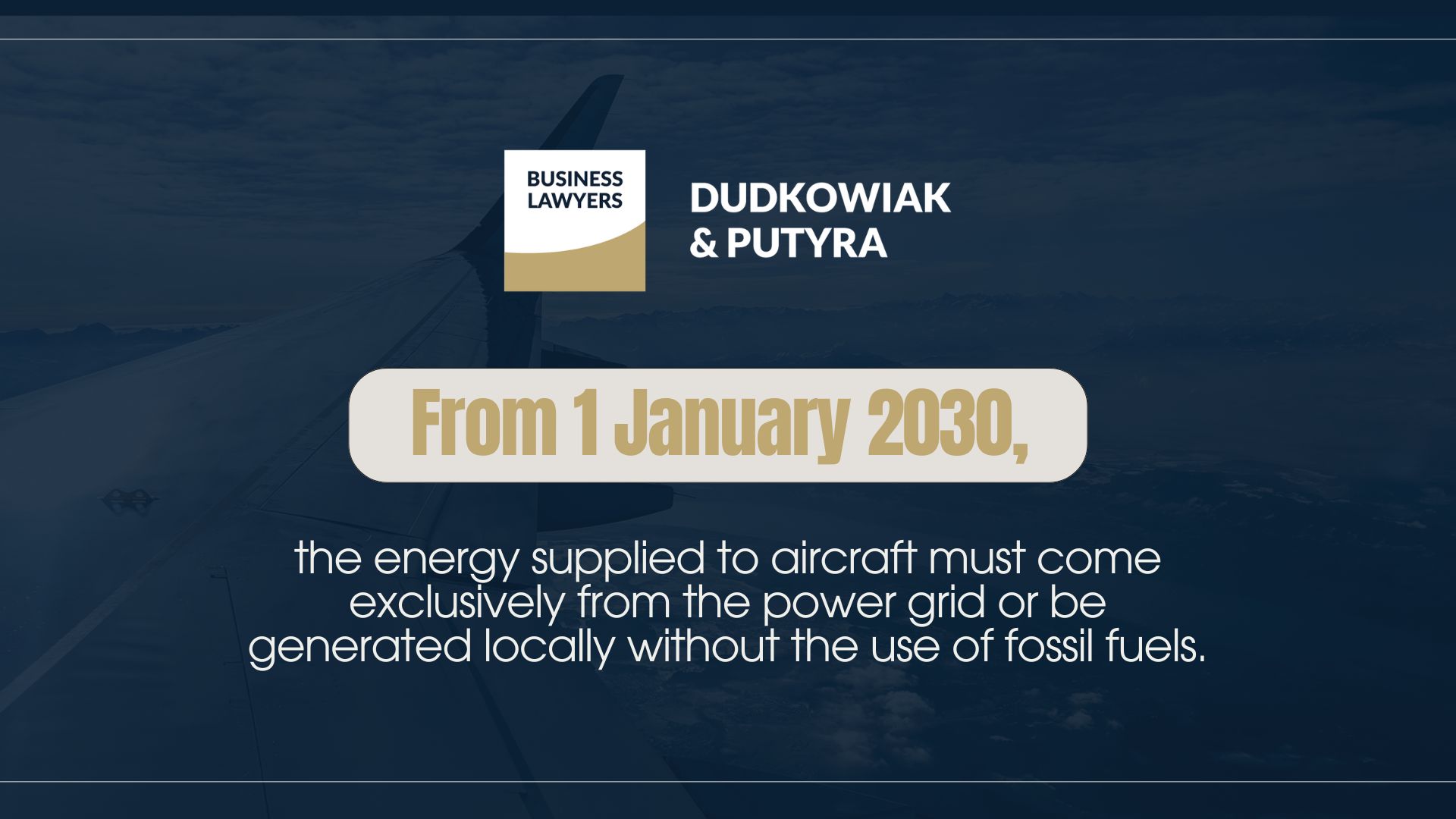Last updated: 02.10.2025

Alternative Fuels Market in Poland – Legal and Regulatory Overview
The alternative fuels market in Poland and the European Union (EU) is regulated by a series of legal acts aimed at promoting sustainable transport and reducing greenhouse gas emissions.
Alternative fuels include, among others, electricity, hydrogen, biofuels, synthetic fuels, CNG and LNG, as well as LPG. Recently, significant updates have been introduced to national policy frameworks regarding the development of the alternative fuels market.
European Union Legal Framework for Alternative Fuels (AFIR Regulation 2023/1804)
The key EU legal act in this area is Regulation (EU) 2023/1804 of the European Parliament and of the Council of 13 September 2023 on the deployment of alternative fuels infrastructure (AFIR) – which replaced the earlier Directive 2014/94/EU.
This Regulation sets specific targets for the development of charging and refueling infrastructure for alternative fuels, to be achieved by 2025 and 2030.
National Policy Framework on Alternative Fuels in Poland (2025)
The National Policy Framework for the Development of the Alternative Fuels Market in the Transport Sector and the Associated Infrastructure is a document that incorporates current data and forecasts, and is expected to be adopted by the Council of Ministers in the second quarter of 2025.
This framework complements existing legal regulations, particularly the Act on Electromobility and Alternative Fuels, which defines key concepts and obligations for the development of electromobility in Poland.
Infrastructure development is also supported by:
- The Excise Duty Act, providing, among others, an indefinite excise duty exemption for electric and hydrogen vehicles, temporary exemptions for PHEVs, and a zero excise rate for CNG, LNG, biogas, and hydrogen;
- The Personal and Corporate Income Tax Acts, introducing increased depreciation limits for low-emission vehicles;
- Executive acts to the Electromobility Act, such as regulations setting technical requirements for charging and hydrogen refueling stations.
Alternative Fuels Strategy in Poland – Key Provisions and Objectives
Alternative Fuels Infrastructure in Road Transport sector
In the context of developing the alternative fuels market in Poland, the road transport sector plays a crucial role. It is forecasted that by 2030, the number of electric vehicles will reach 1.5 millions, and the number of public charging points will exceed 87,000.

An important aspect of state policy is ensuring an adequate pace of infrastructure development for both light and heavy-duty vehicles.
Charging Infrastructure for Light-Duty Vehicles (TEN-T Comprehensive Network)
According to the AFIR Regulation, by 2027, 50% of the length of Poland’s TEN-T comprehensive network should be equipped with charging hubs with a power of 300 kW, each including at least one 150 kW charging point.
By 2030, charging hubs are to cover 100% of this network at 60 km intervals, and by 2035, the hub power will be increased to 600 kW.
To achieve these goals, it is planned to build:
- 85 charging hub locations by 2027, covering 2,582 km (approximately 60%) of the TEN-T comprehensive network,
- By 2030 – over 3,600 km of new road infrastructure and around 140 additional charging hubs,
- Ultimately, by 2035, the TEN-T network in Poland is expected to reach over 4,100 km in length.
Charging Infrastructure for Heavy-Duty Vehicles (TEN-T Core Network)
The infrastructure for heavy-duty vehicles is also subject to specific requirements. Due to high traffic intensity, Poland does not apply flexibility mechanisms, meaning it will fully implement EU standards. Planned targets include:
- By the end of 2025 – covering 15% of TEN-T roads with charging hubs for heavy-duty vehicles, with a maximum distance of 120 km between hubs – 30 locations identified,
- By the end of 2027 – increasing the number of locations to 79, covering the entire TEN-T core network,
- By 2030 – complete coverage of TEN-T roads with charging infrastructure every 60 km, similarly to passenger vehicles.

Hydrogen Fuel in Polish Transport Sector – Targets by 2030
In addition to electromobility, the development of hydrogen propulsion, especially for heavy and specialized transport, is a key strategic element. According to forecasts by the Ministry of Climate and Environment:
- By 2030, over 5,000 hydrogen-powered passenger and light commercial vehicles and over 150 heavy-duty vehicles could be registered,
- Approximately 45.86 thousand tons of renewable hydrogen (RFNBO) are expected to be used in transport in 2030,
- 37 hydrogen refueling stations are planned, 30 of which will be located near urban hubs, with the remaining stations situated along the TEN-T core network roads, maintaining a maximum distance of 200 km between them,
- An intermediate goal is the launch of 17 stations by 2027, all supplying renewable hydrogen produced via electrolysis using renewable energy sources (RES).
OPS and LNG Infrastructure in Maritime and Inland Waterway Transport sector
The document envisages actions to ensure shore-side electricity supply for ships at seaports and the development of inland waterway transport infrastructure.
It is planned to launch OPS (Onshore Power Supply) systems in the ports of Gdańsk, Gdynia, Szczecin, and Świnoujście by the end of 2029.
In the Port of Gdańsk, an expansion of the power system is underway, including the construction of a new GPZ 110/15 kV substation and a supply network, which will enable the electrification of port infrastructure, electric vehicles, reefers, green hydrogen production, and the connection of renewable energy sources.
In Świnoujście, a mobile OPS system at the ferry terminal is already operational.
Maritime transport infrastructure for LNG bunkering will also be developed, with the potential use of bioLNG and eLNG, aligning with the sector’s decarbonization goals. Poland, as a key country in Baltic transport, can thereby enhance the competitiveness of its ports.
For inland waterway navigation, according to AFIR, at least one OPS installation must be available in each inland port of the TEN-T comprehensive network by the end of 2030.
Air Transport Electrification and Decarbonization Targets
According to AFIR requirements, by the end of 2024, all contact stands for aircraft at TEN-T airports must provide access to electricity during stops – this goal has already been achieved. By 31 December 2029, access to power must also be ensured at remote stands at the airports in Gdańsk, Szczecin, Kraków, and Katowice (Pyrzowice).
From 1 January 2030, the energy supplied to aircraft must come exclusively from the power grid or be generated locally without the use of fossil fuels. Achieving these targets will constitute a significant step towards the decarbonization of aviation and reducing emissions at airports.

Hydrogen and Battery Rail Infrastructure in Non-Electrified Routes
The document also addresses the development of infrastructure for hydrogen-powered or battery-powered trains on sections of the TEN-T network that cannot be electrified.
The development of alternative fuels infrastructure, supported by both EU regulations – such as the AFIR Regulation-and national policy frameworks, is one of the key elements of the energy transition in the transport sector.
Poland, as an important transit country and a member of the TEN-T network, has a particularly significant role to play in achieving decarbonization goals.
Effective implementation of the planned actions will require not only infrastructure investments but also adequate legislative, technological, and educational support. Only consistent and ambitious efforts will allow the construction of a modern, environmentally friendly, and competitive transport system in Poland and across the European Union.
The development of alternative fuel vehicles infrastructure in Poland, supported by AFIR and the National Policy Framework, represents a decisive move toward modernizing the transportation sector.
The strategy encompasses not only investment in charging and fueling infrastructure but also regulatory reform, digital innovation (e.g., smart payment systems), and public-private cooperation – guided by scientific bodies such as the National Academy of Sciences and overseen by the Office of Energy Efficiency and the Office of Energy.
Only through long-term, integrated action will Poland and the EU transition away from conventional fuels toward a cleaner, more secure future for mobility.

FAQ – Alternative Fuels Market in Poland and EU
What types of transportation fuel are covered by Poland’s National Policy Framework?
The National Policy Framework supports a wide range of transportation fuel types, including compressed natural gas, liquefied petroleum gas, biodiesel, ethanol, and renewable natural gas. The policy also encourages the development of alternative fuel infrastructure for fuel cell vehicles, hybrid electric systems, and vehicles powered by gaseous fuels and liquefied form energy carriers.
These initiatives aim to reduce reliance on traditional gasoline, diesel fuels, and other fossil fuels in favor of renewable resources.
How does the framework support environmental performance and energy efficiency?
The legal measures adopted under the AFIR Regulation and national legislation focus on enhancing environmental performance, improving fuel economy, and reducing carbon dioxide and carbon monoxide emissions. Infrastructure projects prioritize energy efficiency and renewable solutions, such as solar power and the integration of renewable resources into charging networks.
These policies also contribute to better air quality and long-term mitigation of climate change impacts in the transport sector.
Are alternative fuels expected to support diverse vehicle types and operational conditions?
Yes. The framework provides for the deployment of infrastructure adaptable to both light trucks and heavy-duty vehicles, supporting systems designed for flexible fuel vehicles, single fuel, or dedicated system configurations.
It also includes solutions for vehicles using internal combustion engines powered by vegetable oils, animal fats, or waste derived oils, as well as for technologies capable of operating under low temperatures.
The strategy enables the use of mixed system architectures, expanding the driving range and versatility of vehicles relying on other fuels or by-products such as biomass or waste feedstock.

